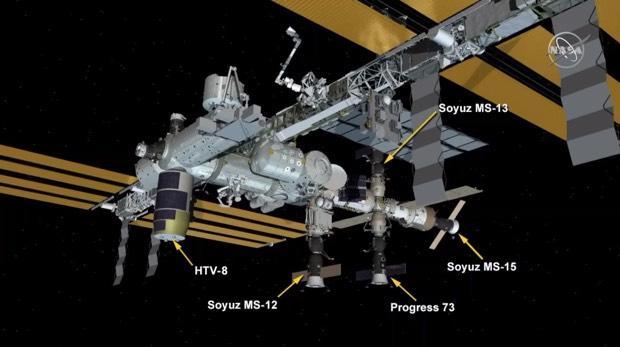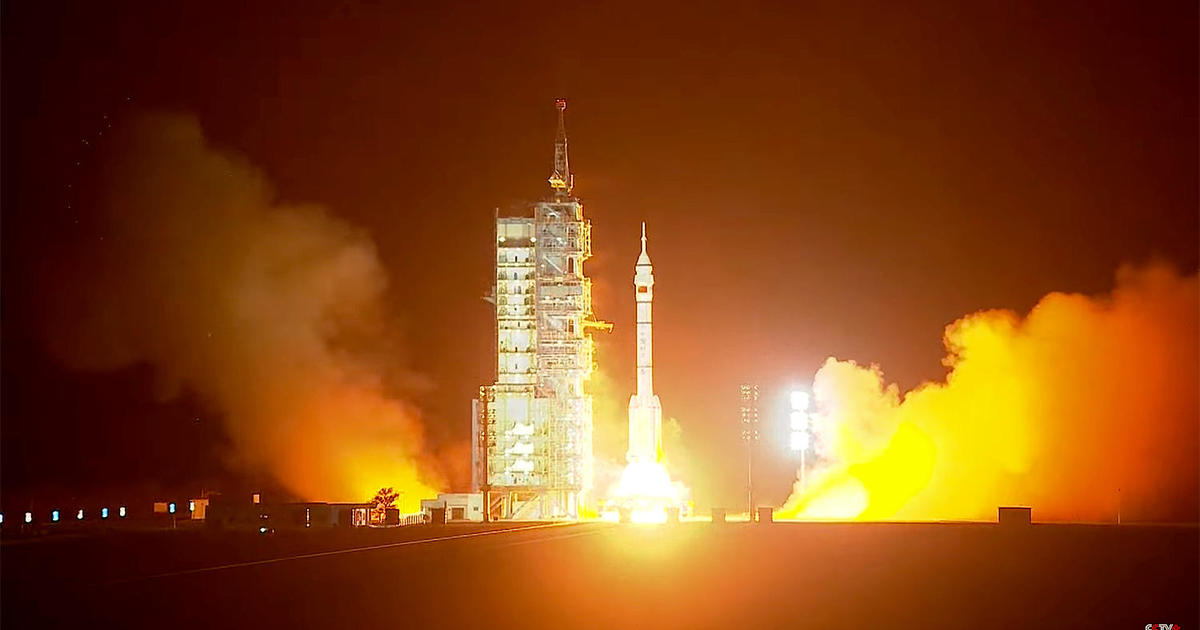Japanese cargo ship blasts off on flight to space station
Running two weeks late after a launch pad fire, a Japanese H2-B rocket shot away from the picturesque Tanegashima Space Center Tuesday, propelling an HTV cargo ship into orbit, carrying a fresh set of batteries for the International Space Station's aging solar power system.
The flight kicks off a challenging schedule for the station program, with three crew members set for launch aboard a Russian Soyuz ferry ship Wednesday, five spacewalks on tap in October to install the new batteries and up to a half dozen spacewalks in November and December to repair a particle physics experiment on the station's power truss.
The hydrogen-fueled H2-B's main engine thundered to life at 12:05 p.m. EDT (1:05 a.m. Wednesday local time) followed a moment later by ignition of four strap-on solid-fuel boosters and release from its seaside launch pad.
Streaking away to the southeast, the booster quickly accelerated as it plowed up and out of the thick lower atmosphere, releasing the spent strap ons and core stage as it went. Fifteen minutes after liftoff, the HTV-8 spacecraft was released to fly on its own.
Rocket builder Mitsubishi Heavy Industries and the Japanese Aerospace Exploration Agency — JAXA — attempted to launch the rocket September 10, but a fire broke out on the launch pad during fueling when leaking oxygen and static electricity combined to trigger a blaze.
The H2-B rocket was not damaged in the incident, the launch pad was repaired and mission managers cleared the booster for launch Tuesday. There were no apparent problems.
It was the eighth launch of an HTV "Kounotori" cargo ship supplied by JAXA and the first since September 2018. The primary payload is a set of lithium-ion batteries needed to replace aging units used to store power from the space station's left-most set of solar arrays during orbital darkness.
Also on board: crew supplies and equipment that will be needed for another series of spacewalks later this year to repair a particle physics instrument mounted on the station's power truss.
If all goes well, the HTV-8 cargo ship will catch up with the station early Saturday, pulling up to within about 30 feet and then standing by while the lab's robot arm locks onto a grapple fixture. From there, it will be pulled in for berthing at the Earth facing port of the forward Harmony module..
Inside the HTV's pressurized cabin is more than 5,300 pounds of science equipment, spare parts, spacewalk equipment, computer gear and crew supplies. The batteries are mounted on a pallet in the cargo ship's unpressurized trunk section.
The power packs will be pulled out by the robot arm later. They will be installed during five spacewalks on the far left side of the lab's solar power truss. The spacewalks, or EVAs, are tentatively planned for Oct. 6, 11, 16, 21 and 25.
The station's solar array truss features eight huge solar wings, four on each end arranged in pairs. The arrays rotate like slow-motion paddle wheels as the station flies through its orbit to maximize the amount of sunlight reaching the solar cells.
When the station is in sunlight, power is fed directly to the lab's myriad systems. At the same time they re-charge four sets of massive batteries housed at the base of each array. When the station moves into orbital darkness, the batteries seamlessly kick in to keep the station powered.
The station's eight electrical power channels originally were supported by 48 nickel-hydrogen — NiH2 — batteries, six per channel. Twenty-four batteries, in two sets of 12, were mounted at the bases of the solar array wings on the starboard, or right, side of the station's main truss with two sets of 12 on the port, or left, side.
NASA is in the process of replacing all 48 of the old nickel-hydrogen batteries with 24 smaller, more efficient lithium-ion — Li-Ion — batteries carried up to the station aboard Japanese HTV cargo ships. The six batteries aboard the HTV-8 spacecraft are the third set of six to be delivered. Another six will be delivered next year.






